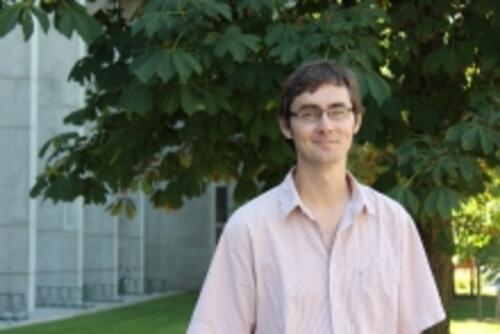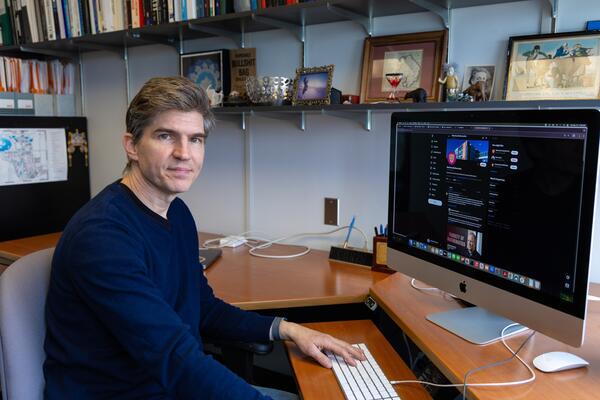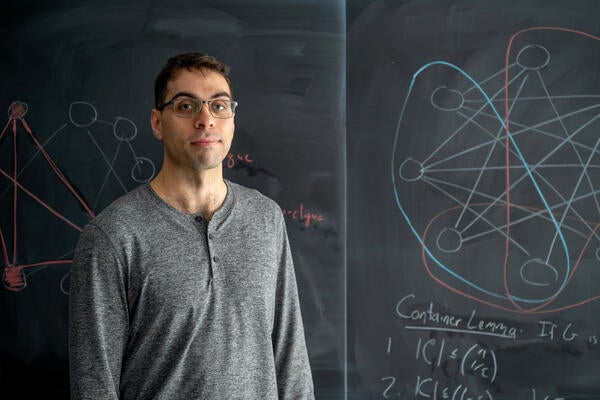
Waterloo mathematician solves 40-year-old problem
A team of mathematicians has solved a problem first posed more than 40 years ago that has confounded modern mathematicians, until now

A team of mathematicians has solved a problem first posed more than 40 years ago that has confounded modern mathematicians, until now
By Media RelationsWATERLOO, Ont (Wednesday, August 28, 2013) – A team of mathematicians has solved a problem first posed more than 40 years ago that has confounded modern mathematicians, until now.
Professor Jim Geelen of the University of Waterloo and his colleagues, Professor Bert Gerards of Centrum Wiskunde & Informatica and the University of Maastricht in the Netherlands, and Professor Geoff Whittle of Victoria University of Wellington in New Zealand have proved the famous Rota’s Conjecture.
The three men worked for almost 15 years to solve this problem posed by the famous mathematician and philosopher Gian-Carlo Rota in 1970. Earlier this year, in Waterloo, the trio completed the final step in their epic project.
Rota’s Conjecture relates to a specialized area of mathematics known as matroid theory, a modern form of geometry, which was pioneered by the world-famous, Waterloo-based mathematician Bill Tutte.
The theory investigates the embedding of abstract geometric structures, or matroids, into concrete geometric frameworks – namely, projective geometries over a given finite field. The conjecture is that, for each finite field, there is a finite set of obstructions preventing such a realization. The conjecture was posed by Rota at the International Congress of Mathematics in 1970, serendipitously, one week before Geelen was born.
 "For me the most rewarding part of the research project has been the collaboration with Bert and Geoff. We work together about three times a year typically for periods of three weeks either here in Waterloo or in New Zealand or the Netherlands,” said Professor Geelen. “Those visits are intense; we sit in a room together, all day every day, in front of a whiteboard. The discussion can be very lively at times, while at other times, when we are stuck, we might sit there for two hours without saying a word; each just thinking about ways to overcome the particular obstacle.”
"For me the most rewarding part of the research project has been the collaboration with Bert and Geoff. We work together about three times a year typically for periods of three weeks either here in Waterloo or in New Zealand or the Netherlands,” said Professor Geelen. “Those visits are intense; we sit in a room together, all day every day, in front of a whiteboard. The discussion can be very lively at times, while at other times, when we are stuck, we might sit there for two hours without saying a word; each just thinking about ways to overcome the particular obstacle.”
In 1999, Geelen, Gerards and Whittle joined forces to work on Rota’s Conjecture as well as generalizing the famous Graph Minor Theory developed by Robertson and Seymour to matroids.
Last year they completed their Matroid Minor Theory which gives deep insights into the structure of matroids. The proof of Rota’s Conjecture relies on the full power of that theory and, in addition, required groundbreaking new results on matroid connectivity.
According to the trio, the real hard work only just began when early this year they started writing up the results of their work. The Graph Minors Theory itself filled more than 600 journal pages and the Matroid Minors Theory is set to be at least as long. The team expects that it will take them at least three years to complete the writing.
Jim Geelen is a Professor in the Department of Combinatorics and Optimization at the University of Waterloo and holds a Canada Research Chair. He has received several prestigious honours including a Fulkerson Prize, a Sloan Fellowship,and the Coxeter-James Prize.

Read more
Here are the people and events behind some of this year’s most compelling Waterloo stories

Dr. Chris Bauch, a professor of Applied Mathematics at the University of Waterloo, is part of a team that has developed a new approach to help public health officials predict where outbreaks might occur. (Elisabetta Paiano/University of Waterloo)
Read more
New research demonstrates that vaccine skepticism on social media can predict public health crises

Read more
Waterloo researcher Cameron Seth is breaking down the world’s hardest computer science problem piece by piece
The University of Waterloo acknowledges that much of our work takes place on the traditional territory of the Neutral, Anishinaabeg, and Haudenosaunee peoples. Our main campus is situated on the Haldimand Tract, the land granted to the Six Nations that includes six miles on each side of the Grand River. Our active work toward reconciliation takes place across our campuses through research, learning, teaching, and community building, and is co-ordinated within the Office of Indigenous Relations.